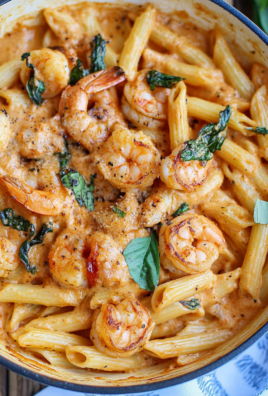Honey lemon vinaigrette is a light, tangy, and slightly sweet dressing that instantly elevates any salad. Made from a blend of olive oil, lemon juice, Dijon mustard, apple cider vinegar, honey, and a few spices, it’s a wholesome, homemade option that tastes far better than store-bought versions.
This zesty lemon dressing is ideal for leafy greens, grain bowls, roasted vegetables, or even as a marinade for proteins. The balance of acidity from the lemon and vinegar, the smooth richness of olive oil, and the subtle sweetness from honey makes it incredibly versatile and crowd-pleasing.

Why You’ll Love This Recipe
- Quick and Easy: Comes together in under 10 minutes.
- Simple Ingredients: Made with pantry staples you probably already have.
- Customizable Flavor: Adjust sweetness, tanginess, or spice to taste.
- Naturally Gluten-Free and Vegetarian.
- Multi-Use: Great as a salad dressing, marinade, or grain bowl topper.
If you’re looking for a healthy vinaigrette without additives, preservatives, or refined sugars, this recipe delivers bold flavor with clean ingredients.
Tools You’ll Need
To prepare this homemade vinaigrette, you’ll need one of the following:
- Food processor or blender – For quick, smooth emulsification.
- Mason jar with a lid – Ideal for shaking and storing.
- Mixing bowl and whisk – Great for manual preparation.
- Measuring cups and spoons – Ensures accurate ingredient ratios.
Why Each Tool Matters
- Blender or food processor: Helps emulsify the dressing into a smooth, cohesive mix.
- Jar: Shake-and-serve convenience, plus storage in one container.
- Whisk and bowl: A traditional method that gives full control over texture.
- Measuring tools: Ensure consistency in taste every time.
Preparation Tips Before You Start
- Use freshly squeezed lemon juice—bottled juice lacks the same brightness.
- Warm the honey slightly to help it mix more easily, especially if using a whisk.
- Mince garlic finely for a smoother texture and better distribution of flavor.
- Chill the vinaigrette before serving to allow flavors to blend.
Ingredients
Here’s everything you’ll need for this lemon vinaigrette recipe:
- 4 oz (½ cup) extra virgin olive oil
- 2 tablespoons fresh lemon juice (juice of 1 lemon)
- 2 tablespoons apple cider vinegar
- 2 tablespoons Dijon mustard
- 2 tablespoons honey (adjust to taste)
- 2 cloves garlic, minced
- 1 teaspoon dried oregano
- ½ teaspoon kosher salt
- ¼ teaspoon ground black pepper
These simple ingredients combine to create a bright, balanced dressing that’s far more flavorful than anything pre-made.
Step-by-Step Instructions
Option 1: Using a Blender, Food Processor, or Jar
- Add the lemon juice, apple cider vinegar, Dijon mustard, honey, garlic, oregano, salt, and pepper to the blender or jar.
- Pour in the olive oil last.
- Blend or shake vigorously for 20–30 seconds until emulsified and smooth.
Option 2: Using a Whisk and Bowl
- In a mixing bowl, combine lemon juice, vinegar, mustard, honey, garlic, oregano, salt, and pepper.
- Slowly drizzle in the olive oil while whisking continuously.
- Whisk until the mixture becomes thick and emulsified.
Variations and Customization Tips
- Make it vegan: Substitute maple syrup or agave for honey.
- Add heat: Mix in a pinch of red pepper flakes for a spicy kick.
- Boost the herbs: Use fresh basil, thyme, or parsley for an herbaceous twist.
- Creamy version: Blend in a spoonful of Greek yogurt or tahini for a creamy texture.
Best Ways to Serve Honey Lemon Vinaigrette
This honey lemon vinaigrette is one of the most adaptable dressings you can make. Whether you’re assembling a quick weekday salad or building a gourmet plate, this dressing brings balance, acidity, and depth. Below are some great ways to use it:
- Fresh Garden Salads: Ideal for spring mixes, spinach, arugula, or kale.
- Grain Bowls: Adds a bright finish to bowls with quinoa, farro, or couscous.
- Roasted Vegetables: Drizzle over warm roasted carrots, Brussels sprouts, or beets.
- Marinades: Use it to marinate chicken, tofu, or shrimp before grilling.
- Fruit and Nut Salads: Complements ingredients like apples, walnuts, and goat cheese.
- Mediterranean Plates: Works well on chickpea salads or tomato-cucumber blends.
- Wraps and Sandwiches: A spoonful can add brightness to hummus wraps or pita sandwiches.
- Cold Pasta Salads: Toss with whole wheat or gluten-free pasta for a healthy twist.
The flavor profile of this dressing complements a wide variety of dishes and can elevate both simple and complex recipes.
Common Mistakes to Avoid
Even though this is a simple recipe, a few key missteps can impact the final result. Here are common mistakes to avoid when making lemon honey vinaigrette:
1. Using Bottled Lemon Juice
Fresh lemon juice is essential. Bottled versions lack the brightness and subtle acidity needed for balance.
2. Not Emulsifying Properly
When oil and vinegar are not well combined, the dressing will separate quickly and coat unevenly. Use a blender, shaker jar, or vigorous whisking to emulsify.
3. Skipping the Mustard
Dijon mustard is not just for flavor—it acts as a natural emulsifier, helping the dressing stay blended.
4. Overpowering Garlic
Fresh garlic adds great depth, but too much can dominate the entire dressing. Stick to two cloves unless adjusting the other ingredients accordingly.
5. Using the Wrong Oil
Stick to high-quality extra virgin olive oil. Heavily refined or neutral oils can dull the flavor of the dressing.
6. Not Tasting as You Go
Always taste before serving. Adjust the sweetness, saltiness, or acidity to suit your preferences.
7. Ignoring Storage Needs
This vinaigrette must be refrigerated and stored in an airtight container. Always shake or stir before reusing.
Avoiding these mistakes ensures a smooth, well-balanced, and flavorful dressing every time.
Ideal Side Dish Pairings (8 Recommendations)
Looking for dishes that complement honey lemon vinaigrette? These options enhance and contrast the dressing’s citrusy sweetness and savory richness:
1. Grilled Asparagus with Shaved Parmesan
The smokiness of the grilled asparagus balances beautifully with the brightness of the vinaigrette.
2. Roasted Sweet Potatoes with Fresh Herbs
Sweet potatoes and the light tang of the vinaigrette make a satisfying, nutrient-rich side.
3. Quinoa and Chickpea Bowl
Add roasted veggies and greens, then drizzle with vinaigrette for a wholesome, complete dish.
4. Avocado and Arugula Salad
The peppery bite of arugula and creaminess of avocado pair perfectly with lemony acidity.
5. Balsamic Glazed Brussels Sprouts
The sweet and tart glaze creates contrast with the vinaigrette when served as part of a mixed plate.
6. Couscous Salad with Feta and Cherry Tomatoes
A refreshing side that works especially well for summer lunches or meal prep.
7. Tomato and Mozzarella Salad
The vinaigrette adds a citrus-forward alternative to traditional balsamic in a Caprese-style salad.
8. Crispy Tofu with Sesame Seeds
Use the vinaigrette as a dip or drizzle to enhance the crisp, savory notes of baked or air-fried tofu.
Each of these sides is flavorful on its own but becomes even better when combined with the tangy-sweet profile of honey lemon vinaigrette.
Expert Recipe Tips for Perfect Honey Lemon Vinaigrette
Getting the most out of your honey lemon vinaigrette depends on how well you balance flavor and texture. Here are some expert tips to help you perfect it every time:
- Use freshly squeezed lemon juice for the best flavor. Bottled versions lack depth and freshness.
- Warm the honey slightly in a microwave or warm water bath to help it blend more easily, especially when whisking by hand.
- Mince the garlic finely or use a garlic press for smoother consistency and even distribution.
- Taste and adjust before finalizing the batch. Depending on your lemon’s acidity and honey’s sweetness, you may need to tweak the ratios.
- Add herbs mindfully. While dried oregano works well, you can experiment with fresh herbs like parsley, basil, or thyme for a seasonal touch.
- Double the recipe to save time later. This vinaigrette stores well for up to a week.
These small adjustments make a significant difference in achieving a smooth, balanced, and versatile lemon vinaigrette dressing.
Storage Instructions
Proper storage keeps this homemade salad dressing fresh and flavorful for days. Here’s how to store it:
- Use a clean, airtight container, preferably a glass jar with a tight-fitting lid.
- Refrigerate immediately after preparing. It must stay chilled to maintain freshness and prevent spoilage.
- Separation is natural, especially when made without emulsifiers. Before each use, shake the container or stir vigorously to recombine.
If you find that the dressing is no longer emulsifying well after a few days, try adding a small amount of Dijon mustard or honey and blending again.
Reheating or Preparing from Chilled
This vinaigrette does not require reheating, but cold olive oil can solidify slightly in the refrigerator. Follow these steps before serving:
- Let the jar sit at room temperature for 10 to 15 minutes to soften.
- Shake or whisk thoroughly to bring the dressing back to its original consistency.
- Add a splash of lemon juice or warm water if it seems too thick after refrigeration.
Do not microwave the dressing, as it may break the emulsion or overheat the garlic.
Frequently Asked Questions (FAQs)
Can I freeze honey lemon vinaigrette?
Freezing is not recommended. The emulsion will break, and the texture will change significantly once thawed.
How long does this dressing last in the fridge?
It keeps well for up to 7 days when stored in a sealed, refrigerated container.
Can I make this dressing vegan?
Yes. Replace honey with maple syrup or agave nectar for a fully vegan option.
What kind of oil works best for this vinaigrette?
Extra virgin olive oil is preferred for its rich flavor, but you can substitute avocado oil or grapeseed oil for a milder taste.
Can I use white wine vinegar instead of apple cider vinegar?
Yes. White wine vinegar is a suitable substitute and provides a slightly softer acidity.
Why did my dressing separate?
Separation is common in oil-based dressings. Shake or whisk to recombine. Adding a bit more mustard can help stabilize the emulsion.
Is this dressing suitable for meal prep?
Absolutely. It’s an excellent make-ahead option for weekly salads and meal components.
Does this dressing work on cooked dishes?
Yes. It’s great as a finishing touch for grilled meats, roasted vegetables, or even drizzled over warm grains like quinoa or couscous.
Conclusion
This honey lemon vinaigrette proves that a few simple ingredients can create a bright, balanced dressing perfect for countless dishes. Whether you’re making a light salad for lunch, building a grain bowl, or roasting seasonal vegetables, this versatile dressing adds freshness and flavor without overpowering the main ingredients.
With its clean profile, ease of preparation, and ability to pair with so many foods, this dressing deserves a permanent spot in your refrigerator. Try it once, and you’ll keep coming back to its perfect harmony of sweet, tangy, and savory notes.
For more homemade dressings, check out our Healthy Avocado Lime Dressing or our popular Classic Balsamic Vinaigrette Recipe.
Honey Lemon Vinaigrette Salad Dressing
Ingredients
- 4 ounces olive oil about ½ cup
- 2 tablespoons lemon juice juice of 1 lemon
- 2 tablespoons apple cider vinegar
- 2 tablespoons Dijon mustard
- 2 tablespoons honey or to taste
- 2 cloves garlic minced
- 1 teaspoon dried oregano
- ½ teaspoon kosher salt or to taste
- ¼ teaspoon ground black pepper
Instructions
Using a food processor, blender, or jar:
- Combine the olive oil, lemon juice, apple cider vinegar, Dijon mustard, honey, garlic, oregano, salt, and pepper.
- Blend, shake, or process until the dressing is smooth and emulsified.
Using a whisk:
- In a bowl, whisk together the lemon juice, vinegar, mustard, honey, garlic, oregano, salt, and pepper.
- Slowly drizzle in the olive oil while whisking vigorously until the dressing is emulsified.
To serve:
- Chill the dressing in the refrigerator for about 30 minutes for best flavor.
- Drizzle over salads, grain bowls, or roasted veggies and enjoy.




Leave a Comment